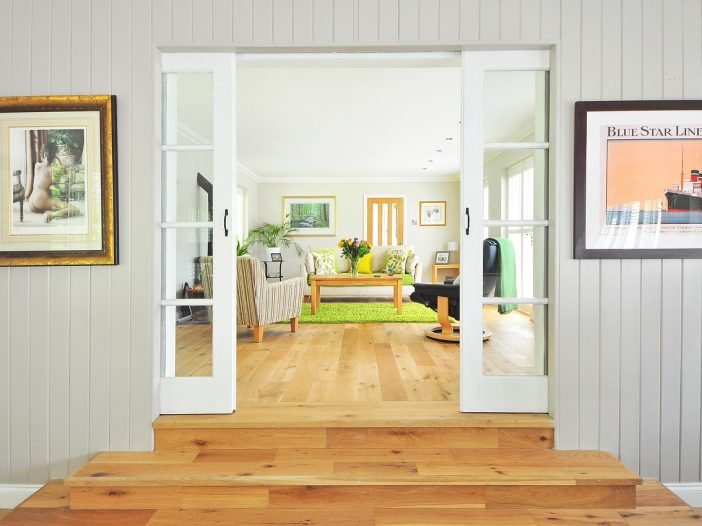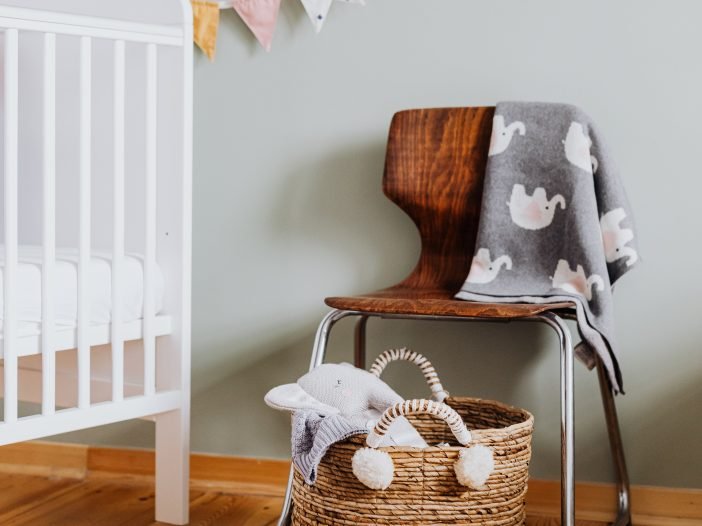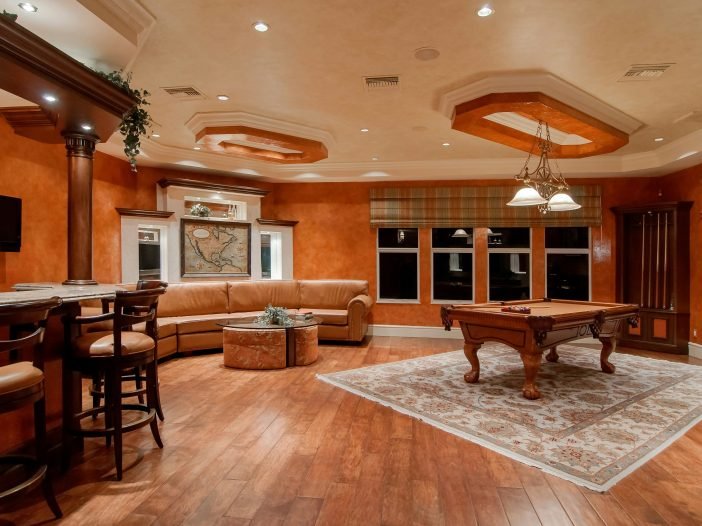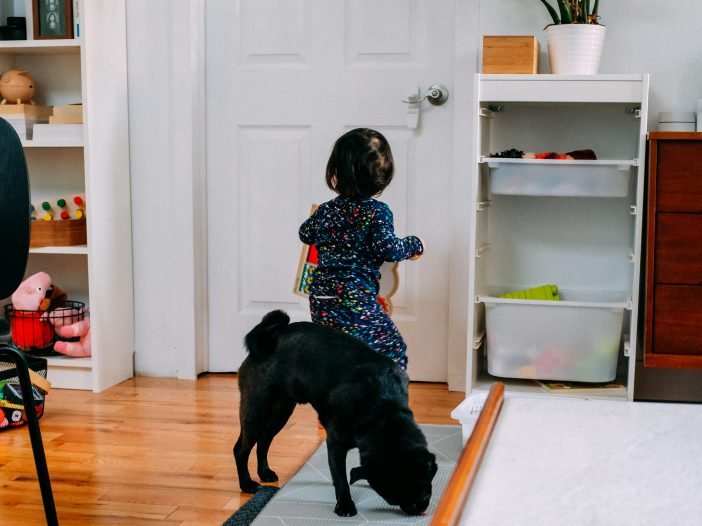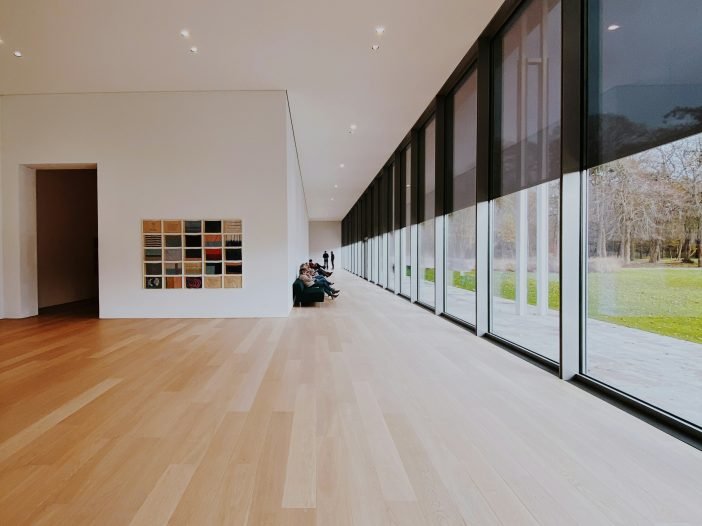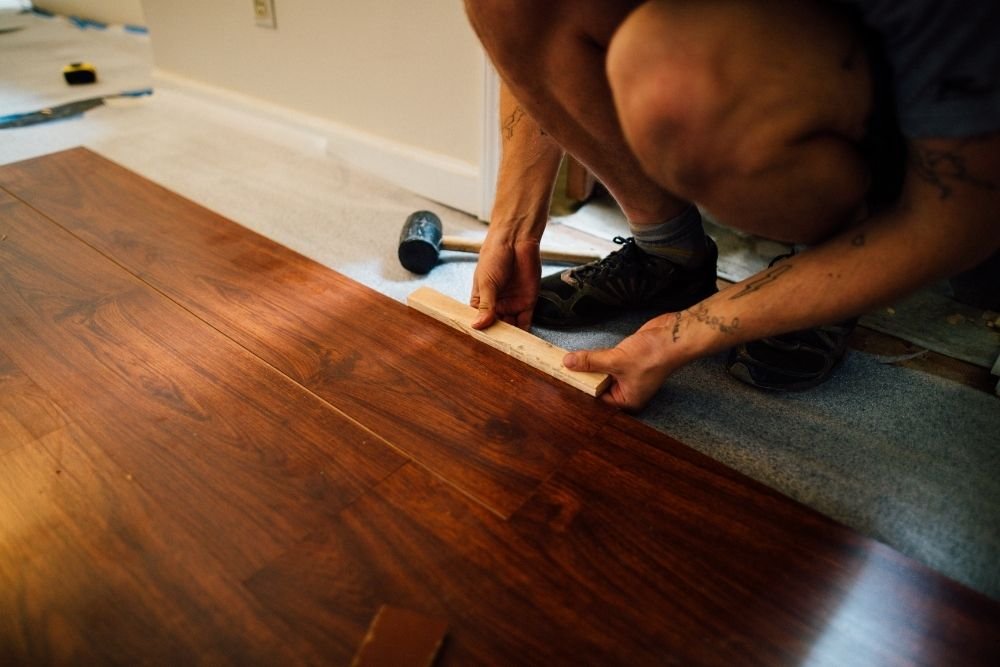Are you tired of wondering if your vinyl plank flooring will hold up over time? Ever wish there was a simple solution to make your floors last longer and look better? You’re not alone, and we’ve got your back.
In ‘Unveiling the Necessity of Underlayment in Vinyl Plank Flooring,’ we’re here to clear up the confusion. No more scratching your head over whether underlayment matters or what it is in the first place.
As Summit Ridge Construction, a trusted authority in flooring solutions, we’ll guide you through the ins and outs of vinyl plank flooring, ensuring you’re equipped with the knowledge to make informed decisions about your home.
Ready to transform your space with confidence? Let’s get started!”
Understanding Vinyl Plank Flooring

Vinyl plank flooring replicates the appearance of hardwood. Fabricated from a synthetic polyvinyl chloride (PVC) material, it has gained popularity for its durability, affordability, and seamless installation.
Furthermore, vinyl plank flooring is water-resistant and can withstand high-traffic areas, making it a versatile flooring option.
Benefits of Vinyl Plank Flooring

This type of flooring offers numerous benefits. Its affordability makes it an appealing choice over traditional hardwood. It’s easier to maintain, requiring simple cleaning methods and little upkeep.
The layers in the vinyl plank not only provide durability but also optimal comfort.
Their sound-dampening properties contribute to a reduced noise level. Furthermore, vinyl planks come in various colors and designs, allowing for various aesthetics.
Common Vinyl Plank Flooring Misconceptions
Despite these benefits, there are some common misconceptions about vinyl plank flooring.
Most people believe vinyl flooring looks “cheap” or fake, but advances in manufacturing have increased its quality substantially.
Others think it’s not durable, but vinyl plank flooring is resistant to scratches, stains, and dents. Finally, some people fear it’s not environmentally friendly, but many manufacturers now produce vinyl plank flooring from recycled materials.
What is Underlayment?

Underlayment is a layer of material installed between the subfloor and floor covering for additional support, insulation, and noise reduction.
It provides a smooth surface for the flooring and helps to level out any minor irregularities in the subfloor.
Benefits of Underlayment in Flooring
Underlayment plays several key roles in flooring and serves as a foundational layer that offers several key benefits:
- Insulation: Underlayment is a thermal barrier between the subfloor and the vinyl plank flooring above it. Underlayment helps maintain a comfortable indoor temperature and can contribute to energy efficiency by preventing heat loss through the floor.
- Noise Reduction: One of the most significant advantages of underlayment is its ability to dampen sound transmission. By absorbing impact and minimizing vibrations, underlayment reduces noise from foot traffic, furniture movement, and other sources, creating a quieter and more peaceful environment.
- Enhanced Comfort: Underlayment provides a cushioned surface underfoot, adding a layer of comfort and support. This cushioning effect can make walking or standing on the floor more pleasant, especially in areas where people spend a lot of time, such as living rooms or bedrooms.
- Moisture Protection: Moisture damage is a common threat to flooring materials, including vinyl plank flooring. Underlayment is a barrier against moisture infiltration from the subfloor, preventing issues such as warping, cupping, and discoloration. By keeping moisture at bay, underlayment helps preserve the structural integrity and appearance of the flooring.
Deciding the Suitable Underlayment

Types of Underlayment for Vinyl Plank Flooring
Foam or cork are commonly used as underlayment materials for vinyl plank flooring.
Foam underlayment is relatively inexpensive and provides sufficient cushion and insulation.
On the other hand, cork underlayment is eco-friendly and suppresses sound effectively.
There are other types:
- Plywood: Plywood underlayment is a versatile option suitable for various flooring types, including vinyl plank, laminate, and hardwood. It provides a sturdy and stable base, helping to prevent flexing or movement in the floor. Plywood underlayment is often used when the subfloor needs reinforcement or leveling.
- Cement Backer Board: Cement backer board underlayment is commonly used in tile flooring installations. It offers excellent support and moisture resistance, ideal for areas prone to water exposure, like bathrooms and kitchens. The cement backer board provides a solid base for tile installation, ensuring durability and preventing cracking or shifting over time.
- Foam: Foam underlayment, typically made from polyethylene or polypropylene, is lightweight and easy to install. It offers good cushioning and sound insulation properties, making it suitable for laminate, engineered wood, and vinyl plank flooring. Foam underlayment helps to reduce noise transmission and provides added comfort underfoot.
- Rubber: Rubber underlayment is known for its durability and resilience. It offers superior impact resistance and noise reduction, making it ideal for high-traffic areas or multi-story buildings where sound transmission is a concern. Rubber underlayment is commonly used in commercial settings but can also benefit residential applications, especially when noise control is essential.
- Felt: Felt underlayment, also known as roofing felt or builder’s felt, is a dense and durable material typically made from recycled fibers. It provides excellent moisture protection and thermal insulation, making it suitable for hardwood, laminate, and vinyl plank flooring. Felt underlayment helps to create a barrier against moisture vapor and can improve the space’s overall comfort and energy efficiency.
When choosing the right underlayment for your flooring project, consider factors such as the type of flooring, the condition of the subfloor, moisture levels, and desired comfort and sound insulation.
Each underlayment type has its advantages and limitations, so it’s essential to select the one that best meets your specific needs and requirements.
Factors to Consider when Choosing an Underlayment
When choosing an underlayment for your vinyl plank flooring, consider factors such as the type of subfloor, the space’s specific needs, your budget, and the product warranty.
Evaluating these factors will guide you towards the most suitable underlayment for your flooring project.
Best Underlayment Materials for Vinyl Plank
Foam and cork are considered the best underlayment materials for vinyl plank flooring. They provide adequate sound insulation and are durable enough to withstand the weight of the vinyl. However, your final choice should be adapted to your specific flooring project requirements.
Installation of Underlayment in Vinyl Plank Flooring

Stepwise Process of Installing Underlayment
Installing underlayment involves several key steps:
First, clean the subfloor and ensure it is level.
Second, roll out the underlayment across the subfloor, ensuring all edges are properly aligned.
Third, use a utility knife to trim the underlayment to the correct size.
Fourth, adhere the underlayment to the subfloor per the manufacturer’s instructions.
Finally, install your vinyl plank flooring according to the manufacturer’s guidelines.
Mistakes to Avoid during Underlayment Installation
During the installation process, avoid common mistakes such as neglecting to clean and level the subfloor, incorrectly measuring and cutting the underlayment, and failing to secure the underlayment adequately.
These errors can lead to an uneven floor surface and reduced lifespan for your vinyl plank flooring.
Getting Professional Help for Installation
While you may consider installing underlayment and vinyl plank flooring as a DIY project, professional help can ensure a smoother and more efficient installation process.
Professionals have the experience and technical expertise to avoid common pitfalls and ensure a perfect finish.
At Summit Ridge Construction, we offer expert installation services in Chelsea, MI, ensuring a meticulous and superior finish for your flooring project.
Underlayment Thickness vs. Vinyl Plank Flooring Durability

Influence of Underlayment Thickness on Flooring Durability
Underlayment thickness can significantly influence the durability of your vinyl plank flooring. Thicker underlayment provides greater insulation, noise reduction, and comfort.
However, it’s vital to balance thickness with hardness to prevent excessive indentation, which could damage the flooring over time.
Balancing Underlayment Thickness and Comfort
While a thicker underlayment can provide more comfort underfoot, it’s essential not to choose an overly thick underlayment, making the flooring feel unstable. A balance must be struck between comfort and the stability and durability of your flooring.
Effect of Underlayment Thickness on Vinyl Plank Flooring Lifespan
Underlayment thickness can also affect the lifespan of your vinyl plank flooring.
A thicker and denser underlayment can absorb impact and reduce the breakdown of the flooring over time.
Conversely, an overly thin or soft underlayment could result in damage to the flooring and reduce its lifespan.
Cost Estimation of Underlayment in Vinyl Plank Flooring

Expense Breakdown for Underlayment and Installation
Several factors influence the cost of underlayment and its installation, including the type of underlayment, its thickness, and the size of the area to be covered.
Professional installation services can also add to the overall cost but ensure a proper installation that can extend the lifespan of your flooring.
Ways to Save on Underlayment Costs
Researching and comparing products and prices can help save on underlayment costs. It’s also crucial to accurately measure your floor space, ensuring you purchase just the right amount of material.
While you may choose to install the underlayment, weighing the cost savings against possible errors leading to future costs is essential.
Return on Investment for Quality Underlayment
Investing in high-quality underlayment can lead to significant returns over time.
Quality underlayment can extend the lifespan of your vinyl plank flooring, reduce repair costs, and increase your property’s value due to elevated flooring quality.
Potential energy savings from improved insulation could also offset the initial cost.
Underlayment vs. No Underlayment: The Debate
Pros and Cons of Using Underlayment
The primary benefits of using underlayment include noise reduction, insulation, moisture control, and a smoother, more comfortable walking surface.
However, the added expense and extra installation work can be negative.
Situations Where Underlayment is Not Necessary
In some cases, vinyl plank flooring may be installed without underlayment.
For instance, you might save on the underlayment cost if the vinyl planks have a pre-attached underlayment layer or the subfloor is perfectly smooth and dry.
However, keep in mind the potential drawbacks discussed earlier.
Industry Standards and Best Practices on Underlayment
The industry standard is always to use underlayment for vinyl plank flooring.
This is because of its multiple benefits in prolonging the lifespan of the flooring, providing insulation, subfloor protection, and minimizing noise. Following this best practice for the best long-term results is always recommended.
Underlayment Maintenance for Vinyl Plank Flooring
How to Maintain Your Underlayment
Proper maintenance begins during installation. Ensure your underlayment is installed correctly to maximize its lifespan and benefits.
Regular cleaning of your vinyl plank flooring will prevent debris accumulation, which may cause wear and tear.
A careful and routine flooring inspection can also help detect any issues early.
Signs of Damaged or Worn Out Underlayment
Bulging or uneven areas in your vinyl plank flooring may indicate a problem with the underlayment.
Additionally, increasing noise when walking or decreasing comfort underfoot might suggest replacing your underlayment.
Replacement Process for Your Underlayment
Replacing an underlayment involves:
- Removing the vinyl plank flooring.
- Taking out the existing underlayment.
- Repeating the installation process with new underlayment.
Because it can be a complex process, seeking professional assistance is advisable to ensure it’s done correctly.
Engaging Experts for Vinyl Plank Flooring Installation in Chelsea, MA and Beyond

Importance of Hiring Experienced Professionals
By hiring experienced professionals for your flooring installation, you’re ensured of quality service and stellar results. Professionals possess the requisite knowledge and skills to handle any issues, ensuring the installation is completed effectively and efficiently.
How Summit Ridge Construction can Help
At Summit Ridge Construction, we take pride in providing expert flooring services. With two decades of experience, our skilled professionals are adept in handling vinyl plank flooring installation.
We ensure meticulous attention to detail every step of the way while also prioritizing your unique needs and tastes.
Contact Summit Ridge Construction for Vinyl Plank Flooring Services in Chelsea, MI
Ready to start transforming your space? Reach out to Summit Ridge Construction.
Our team is dedicated to excellence, creativity, and superior craftsmanship.
We are just a phone call away, ready to bring your vision to life with enduring beauty.
The post What is Underlayment and Its Benefits to Vinyl Plank Flooring Chelsea, MI first appeared on Summit Ridge Construction.
source https://www.srconstructionusa.com/blog/what-is-underlayment-and-its-benefits-to-vinyl-plank-flooring-chelsea-mi/?utm_source=rss&utm_medium=rss&utm_campaign=what-is-underlayment-and-its-benefits-to-vinyl-plank-flooring-chelsea-mi
